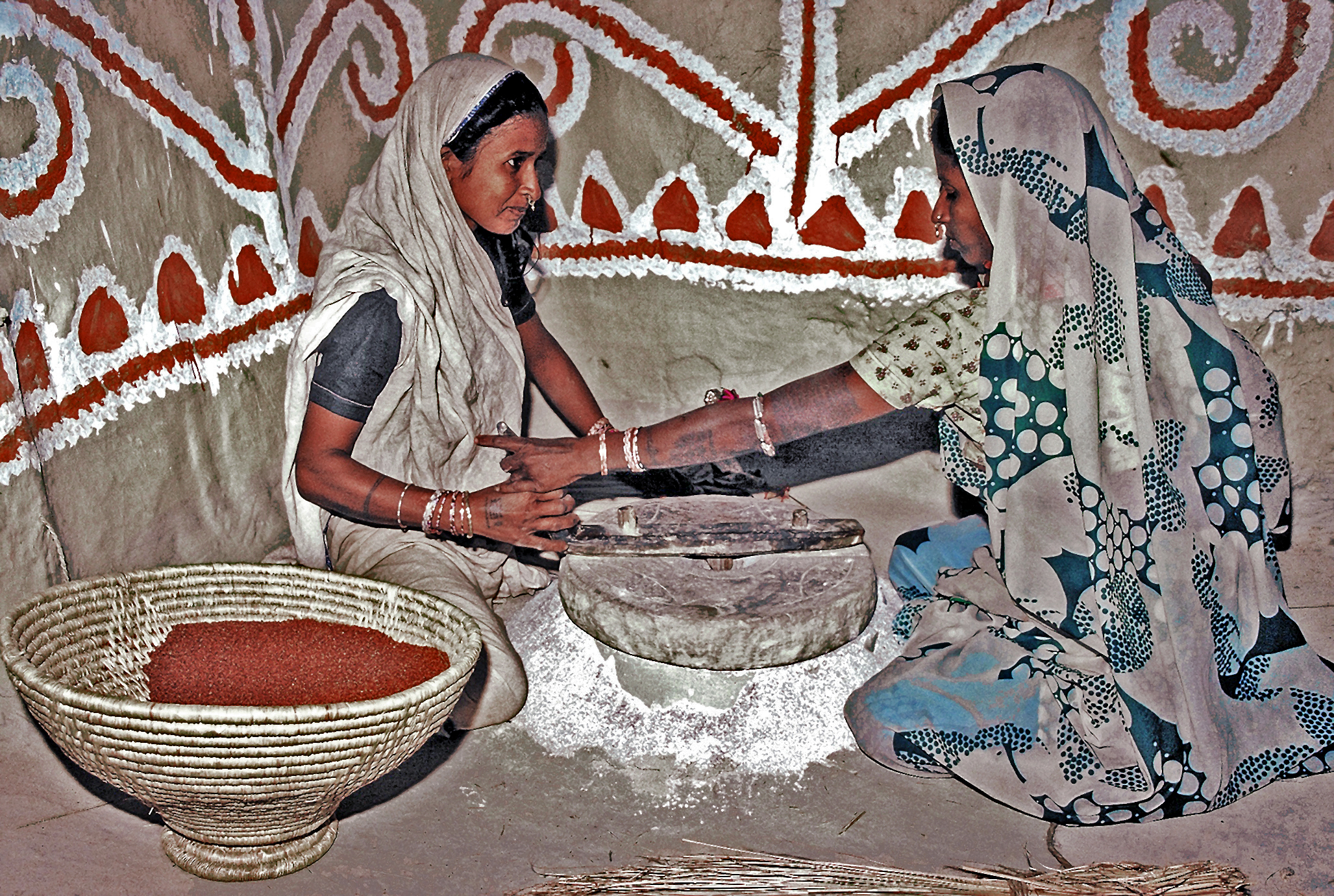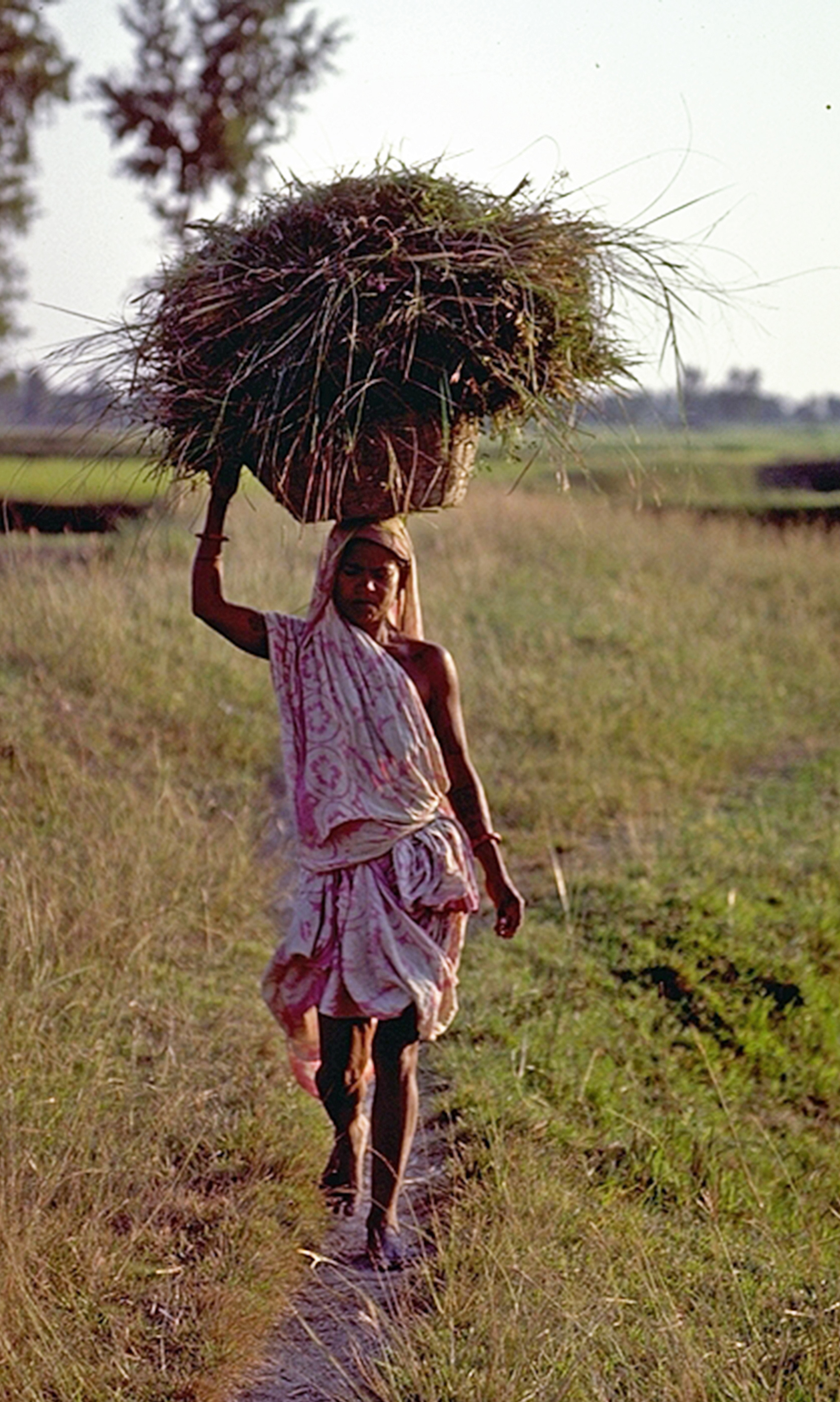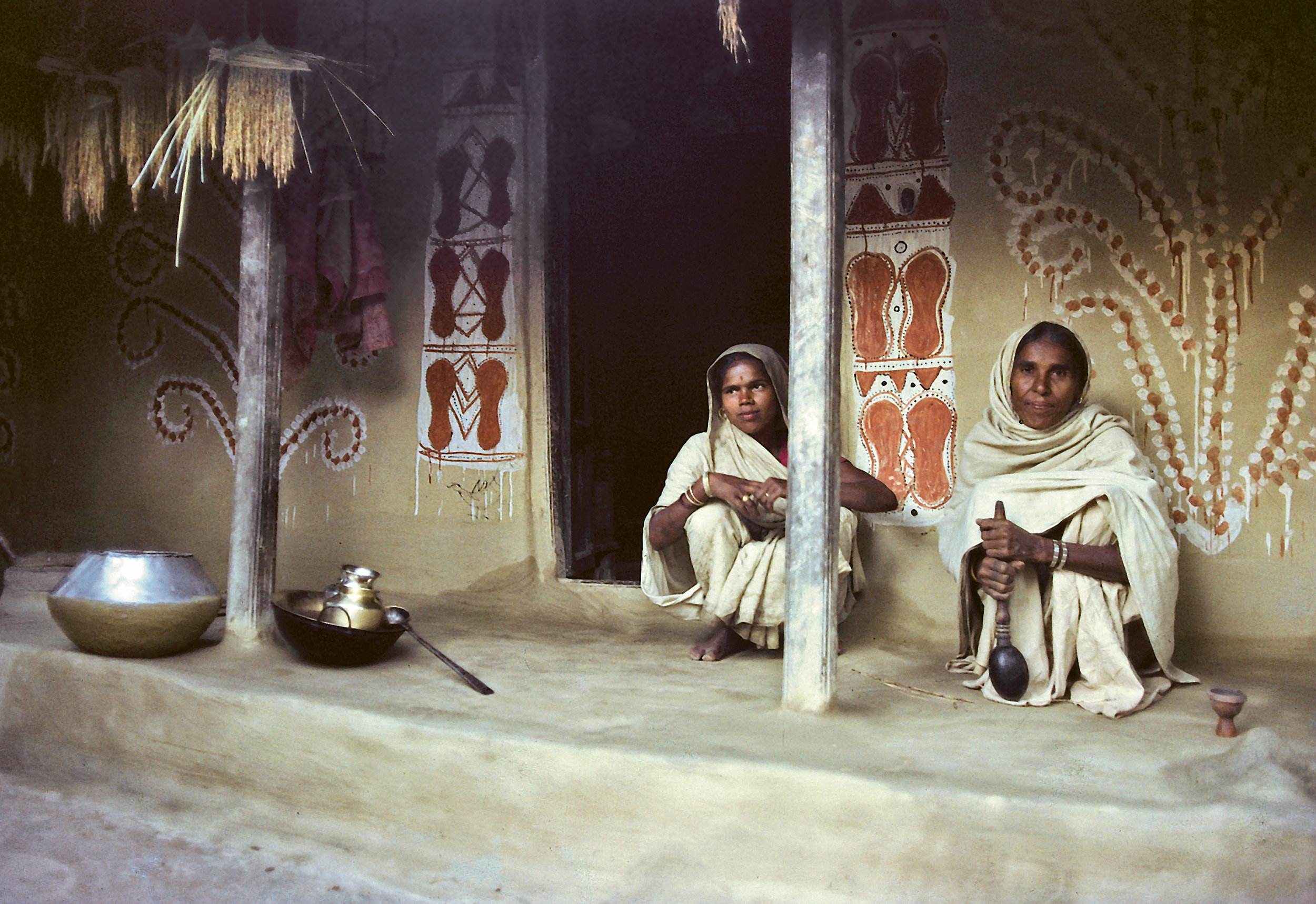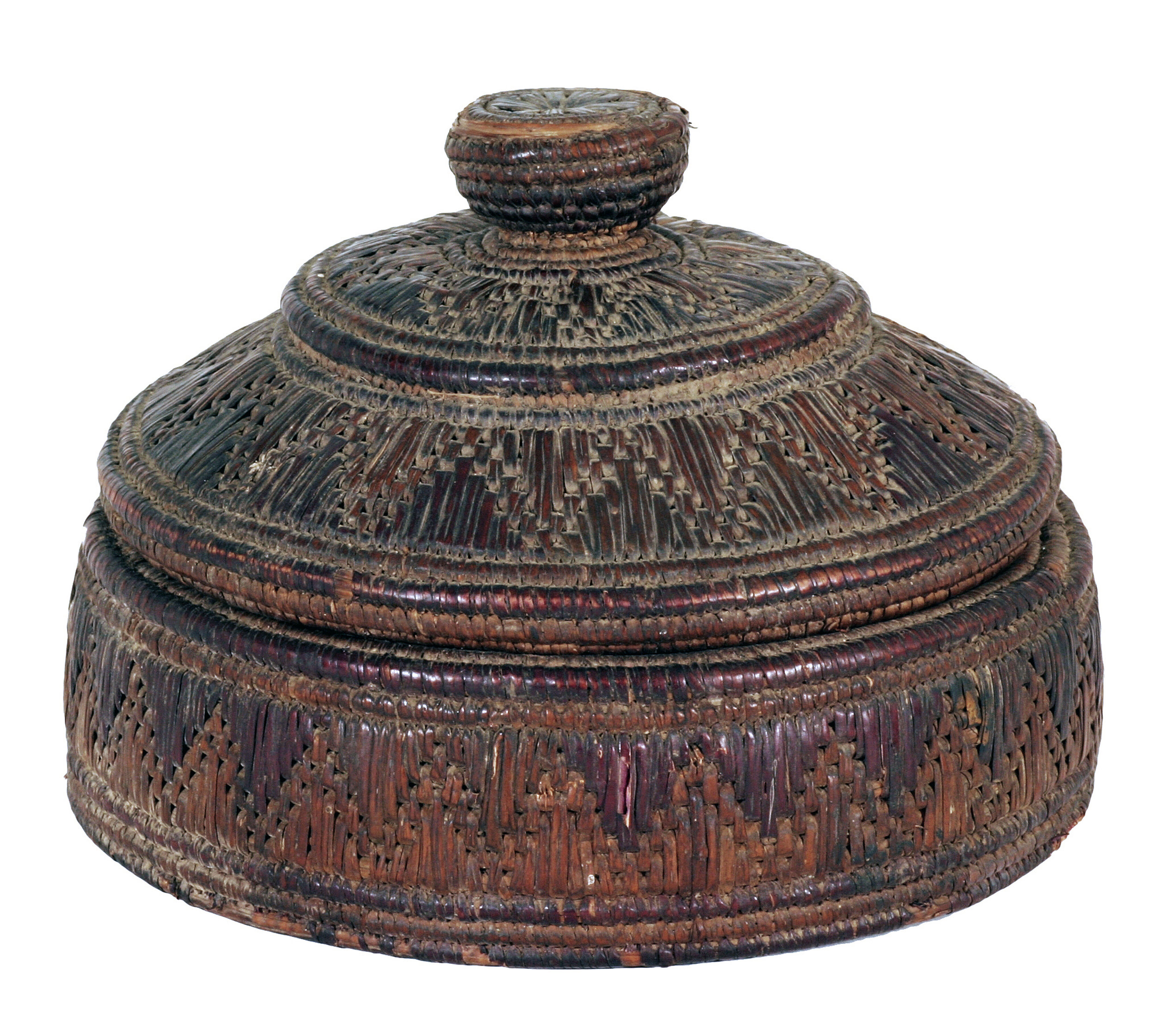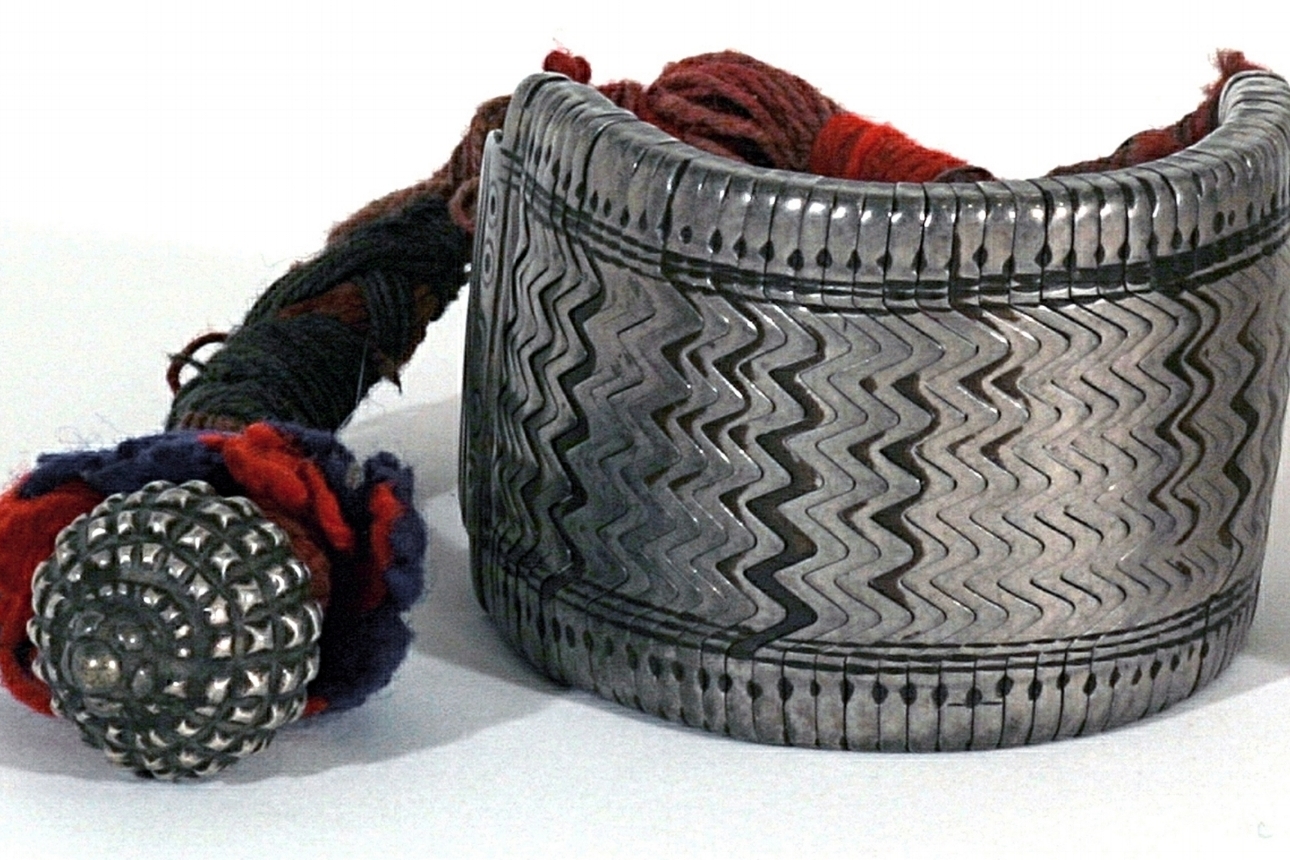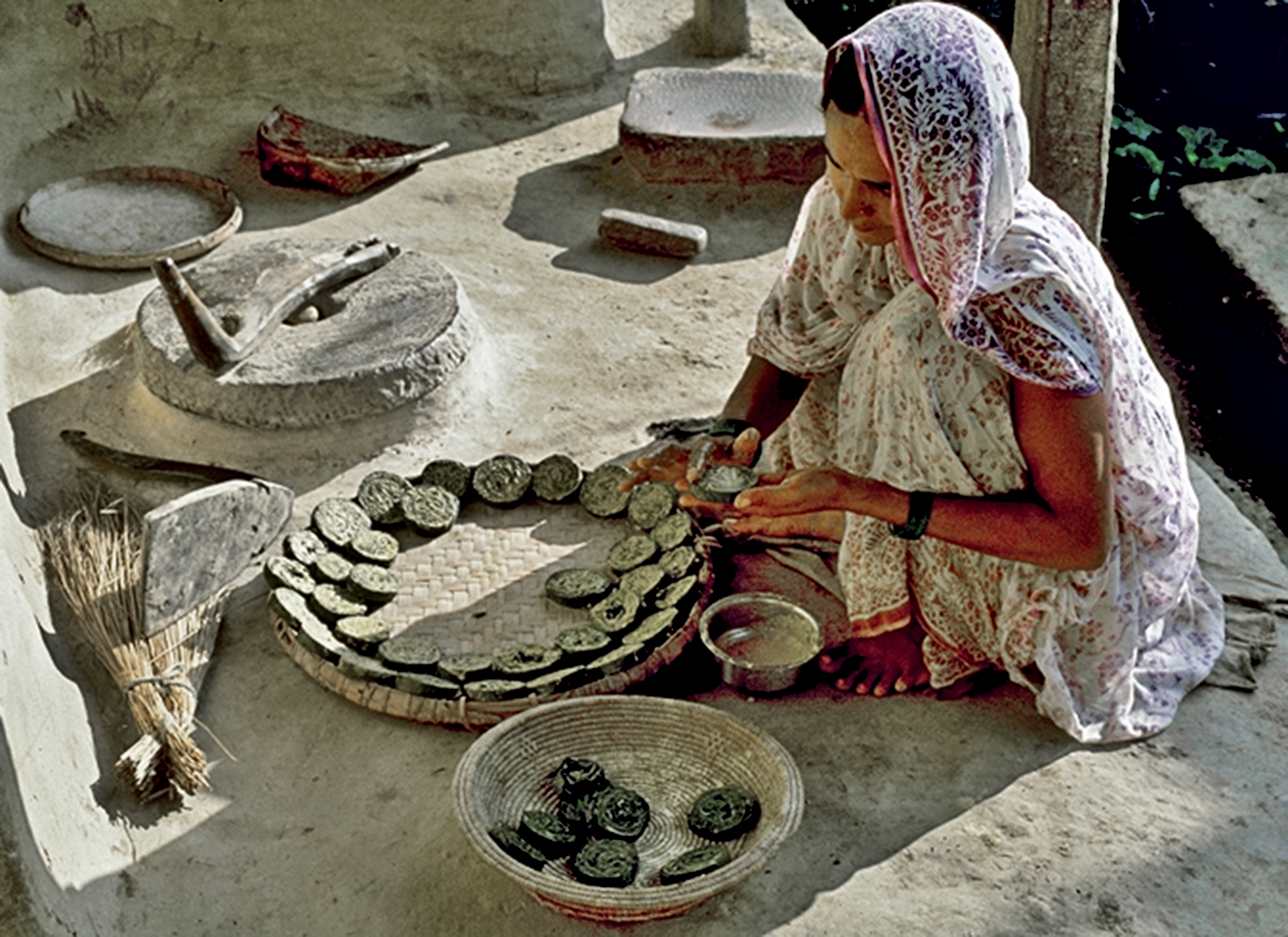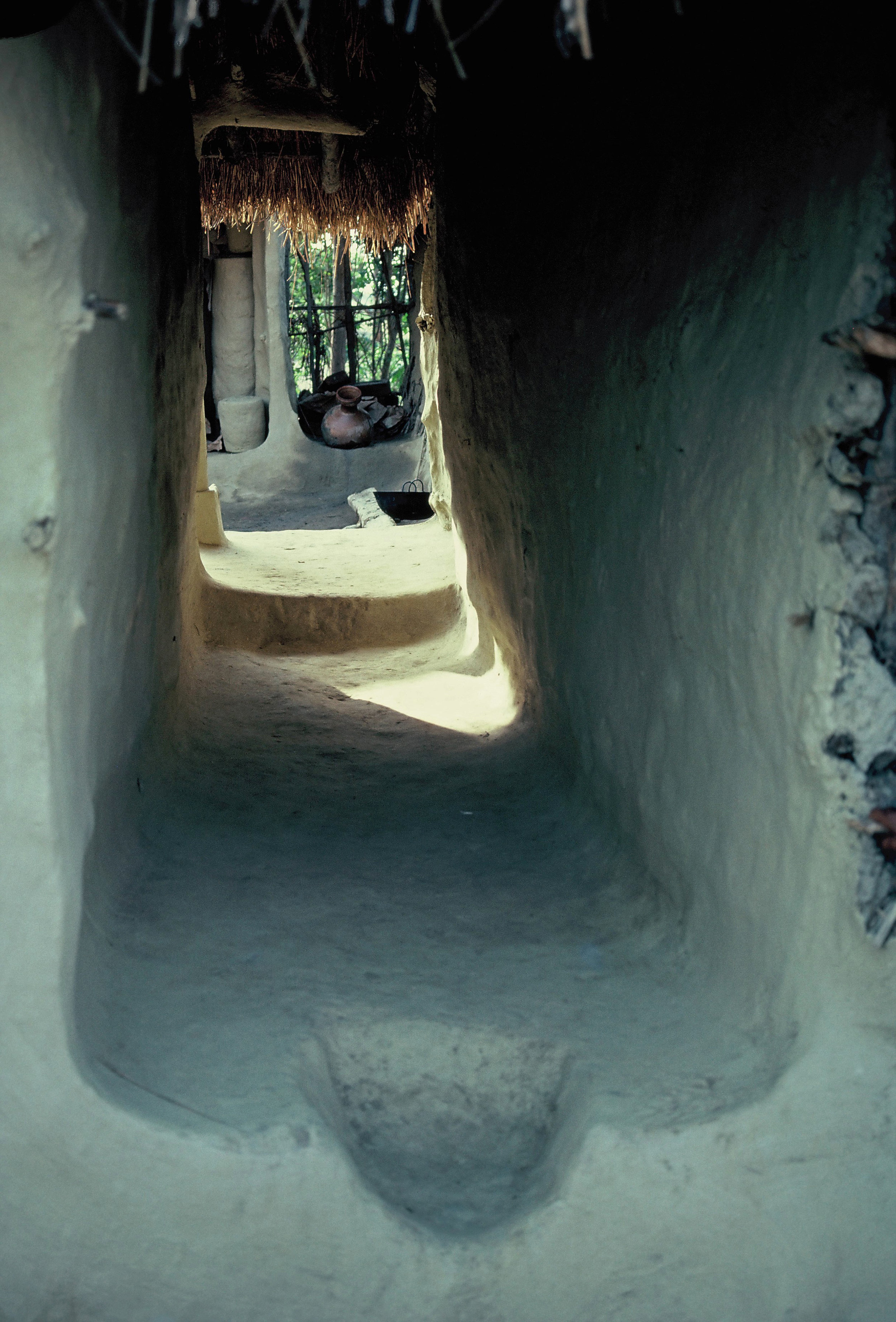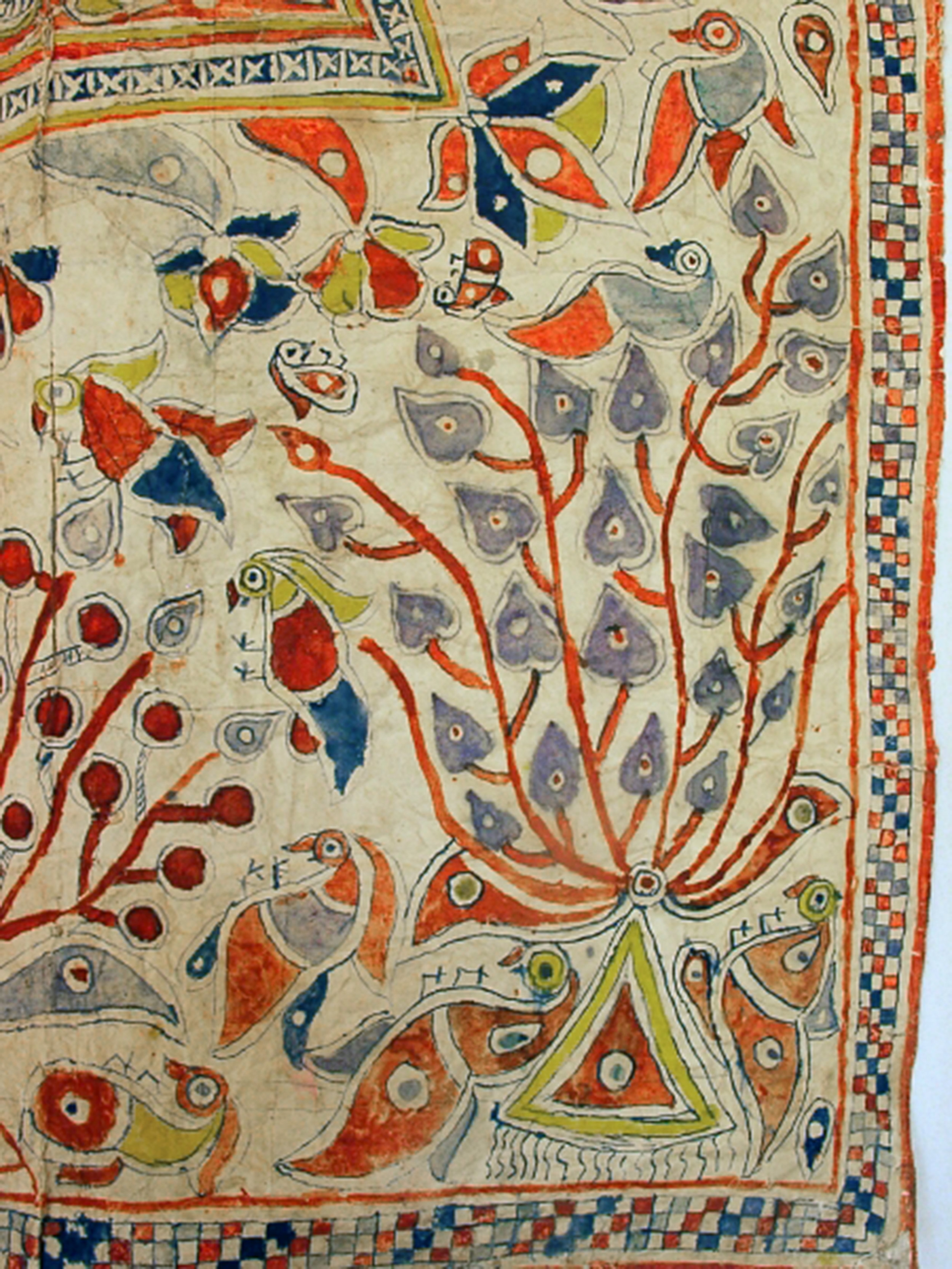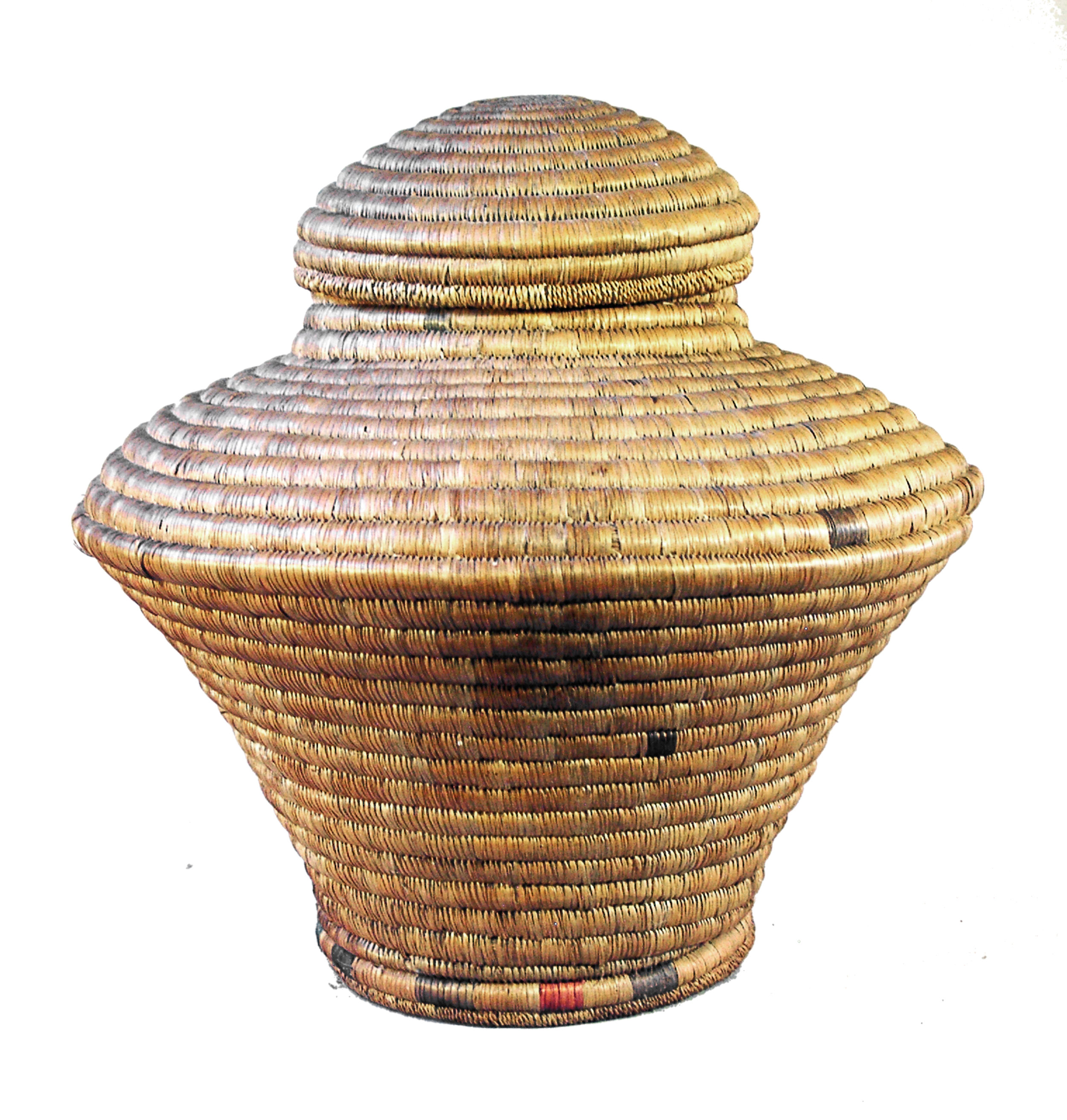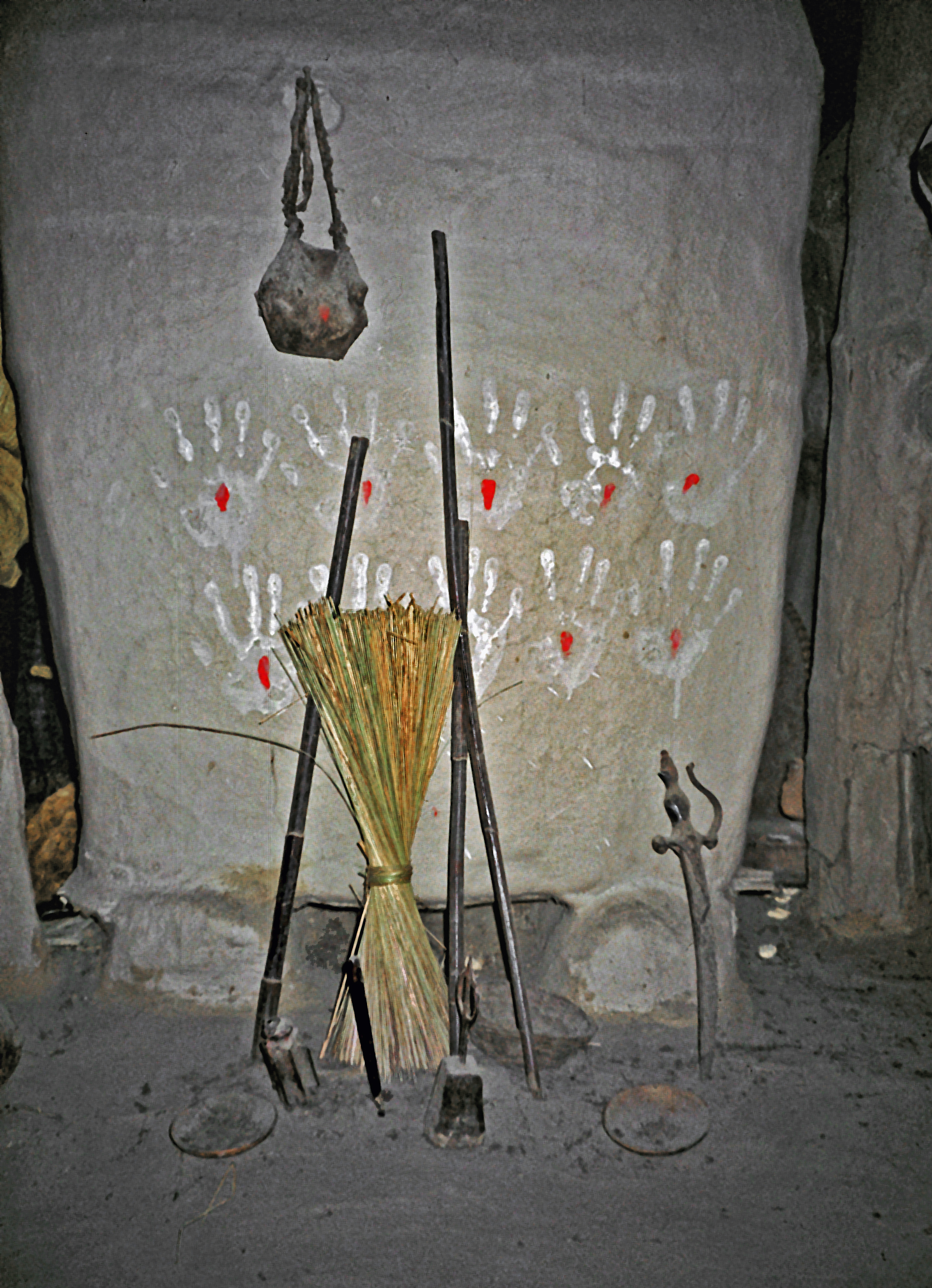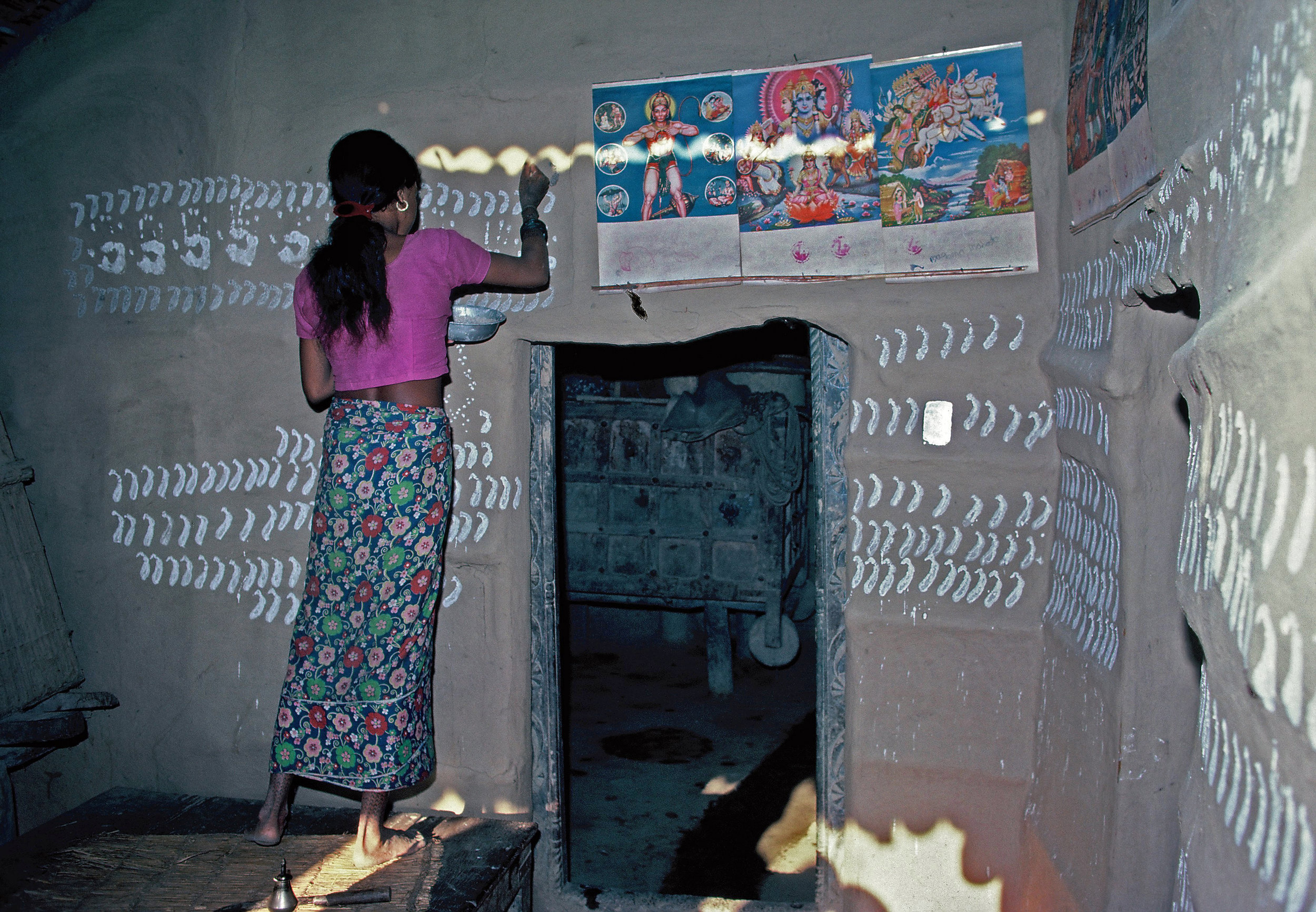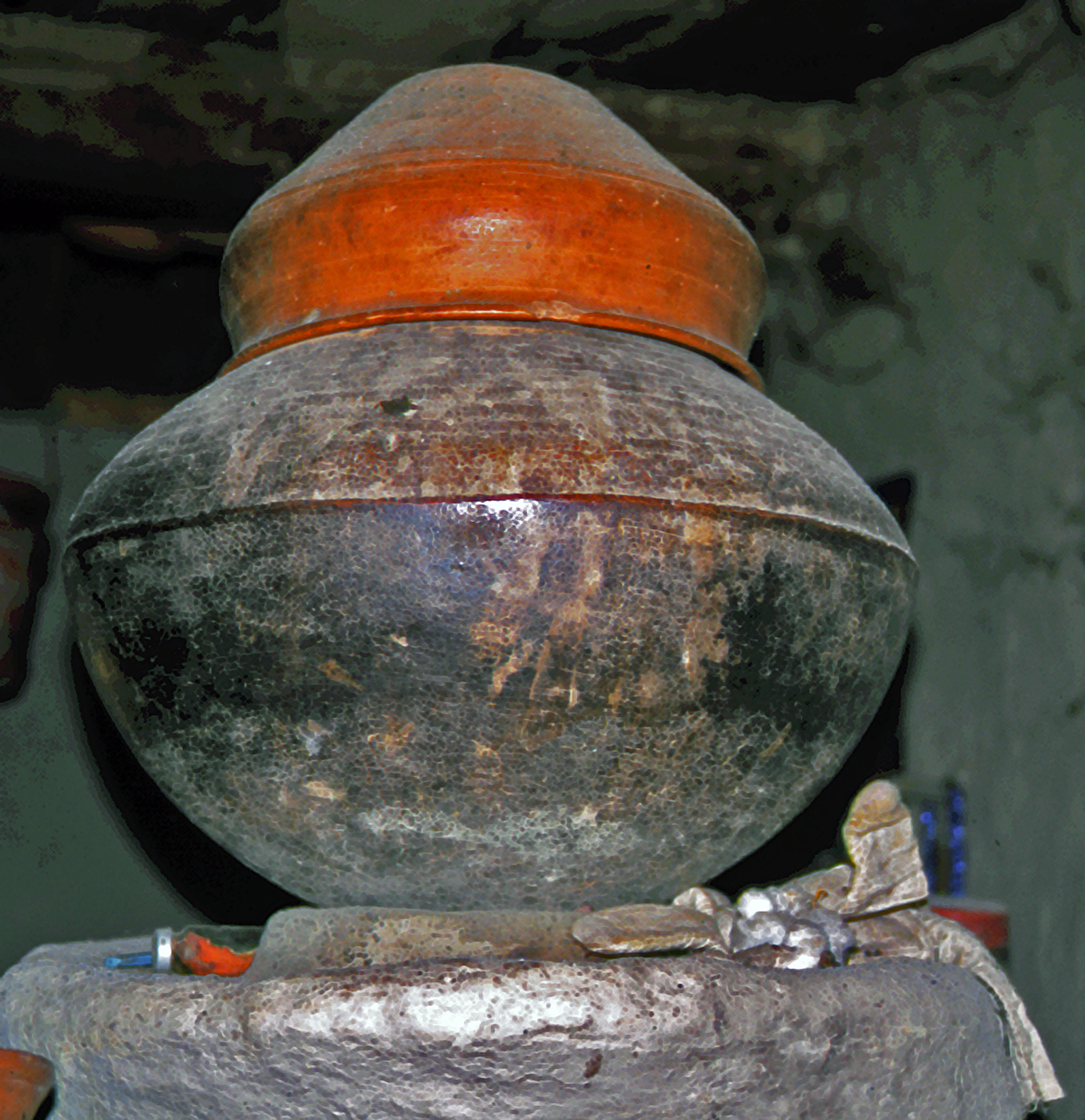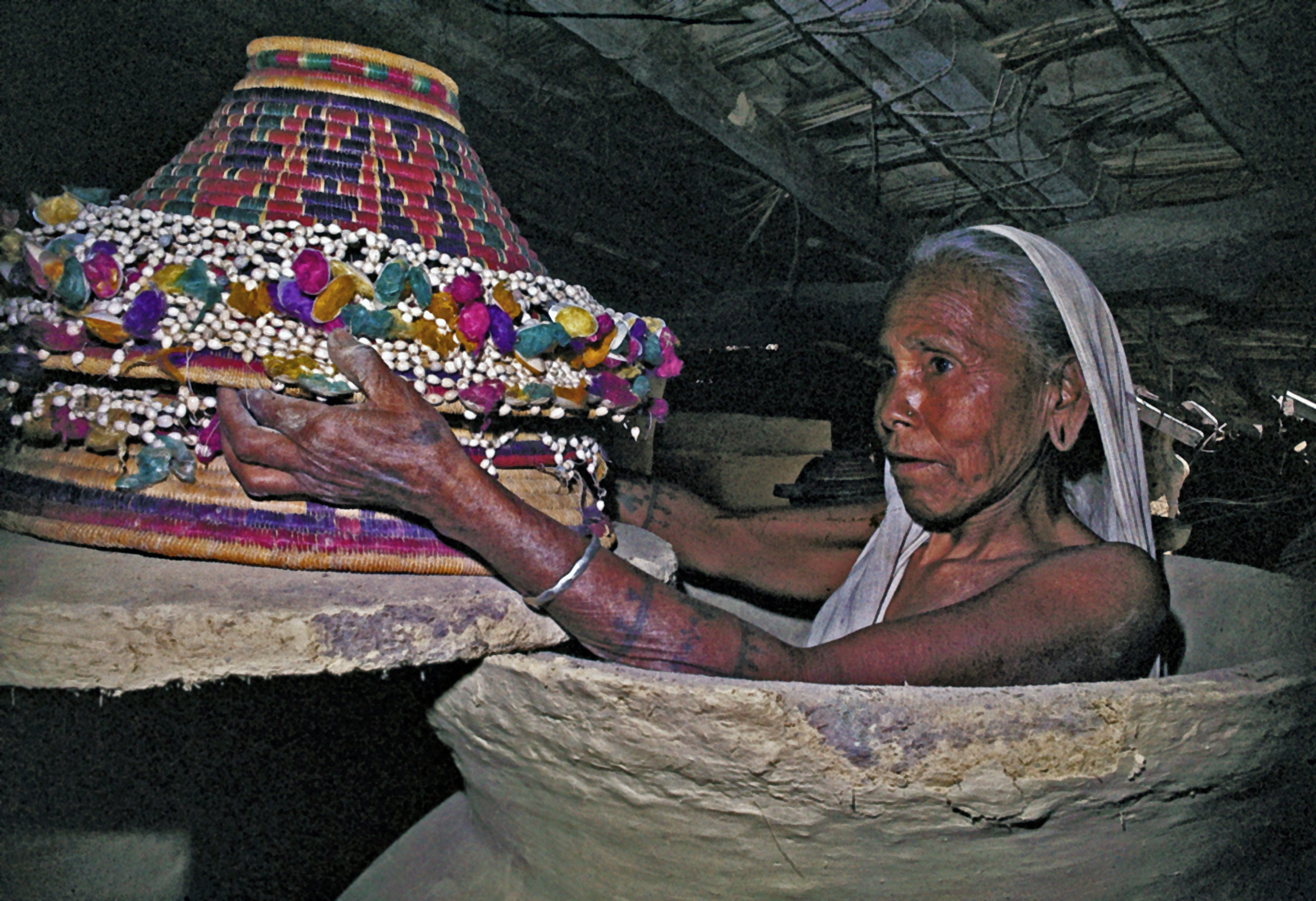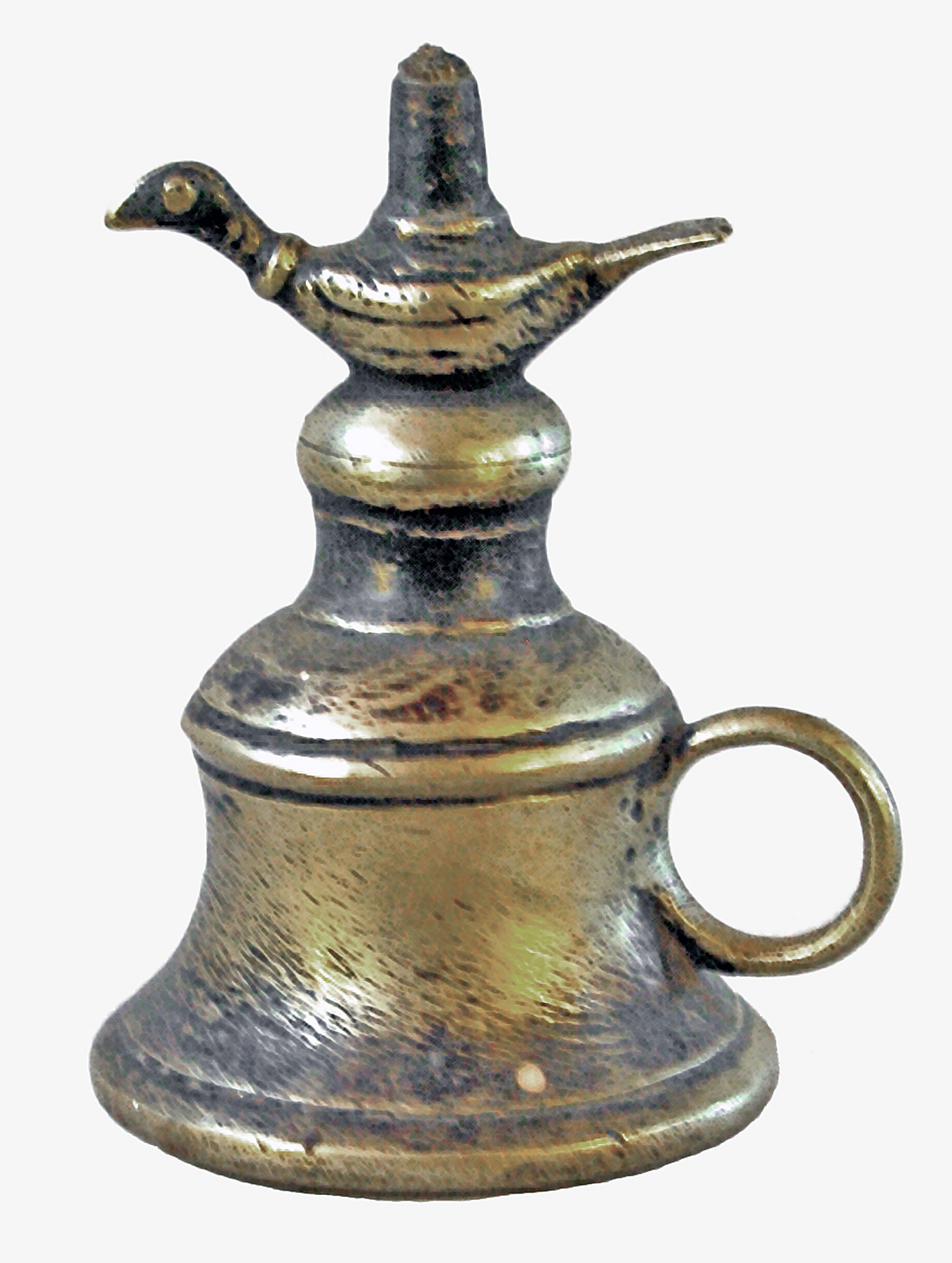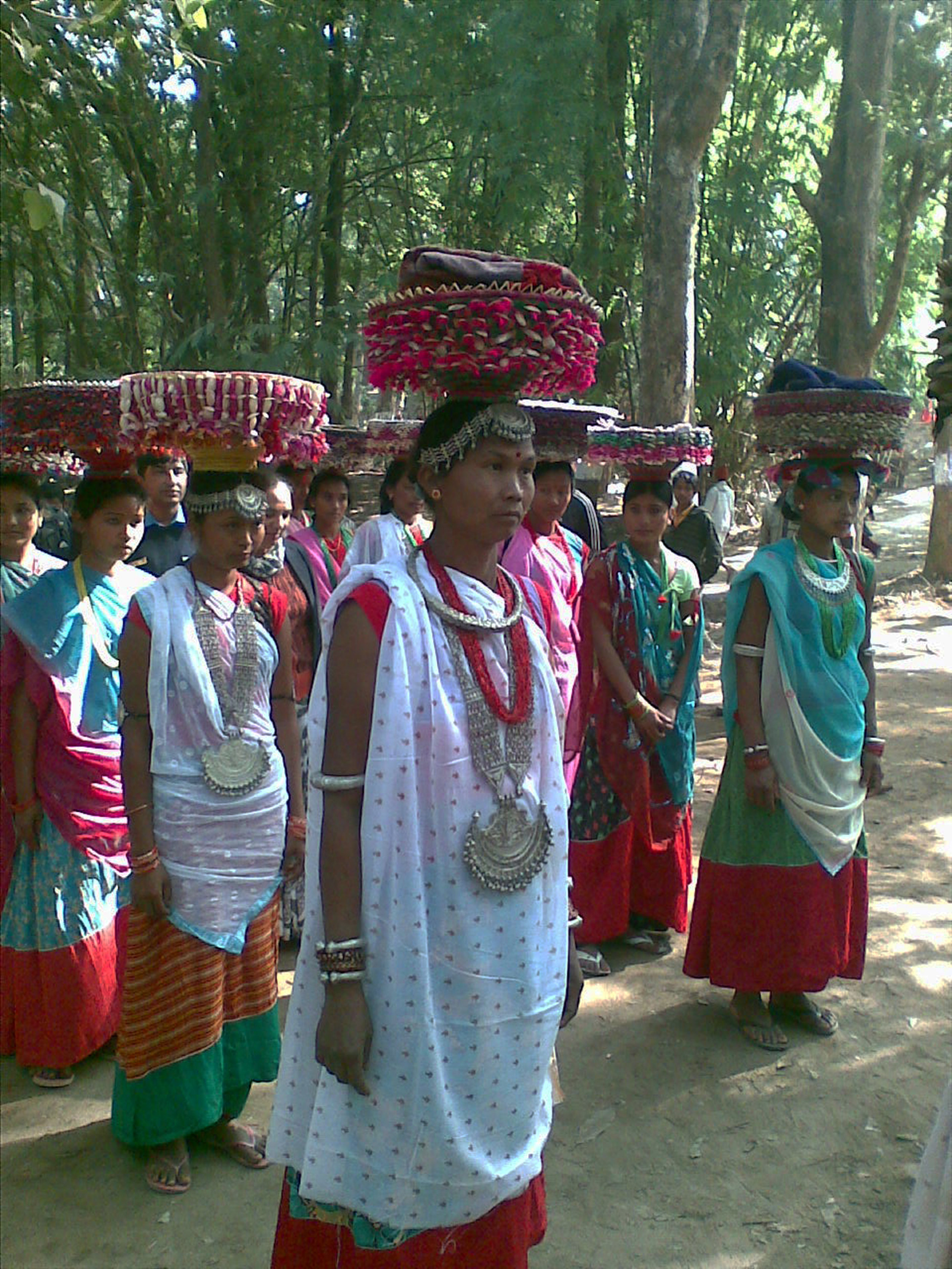As the major rivers of the Himalaya reach the Tarai plains along the border with India, they spread out slow and wide, depositing alluvial soils that continuously enrich the agricultural lands and adjacent jungle. Hot enough for mangoes, these fertile, flat lowlands produce much of the rice for the rest of Tarai is soft and warm, filled with the fragrances of flowering trees and vines, sounds of kingfishers and herons. The lumbering movement of the bullock carts expresses the preferred pace of life.
The Tharu have been living within the jungles for a thousand years or more. Many of the other people of the Tarai - Maithili, Awadhi, and Bengali - belong to northern extensions of these groups across the border within India, observing the same traditions based on Sanskrit language and Vedic culture as their relatives in India. Although the Maithili and Tharu both live within the same Tarai environment, with the same natural resources of clay, bamboo and tropical woods available to them, they exist in very different ways and produce very different household and ritual art.


